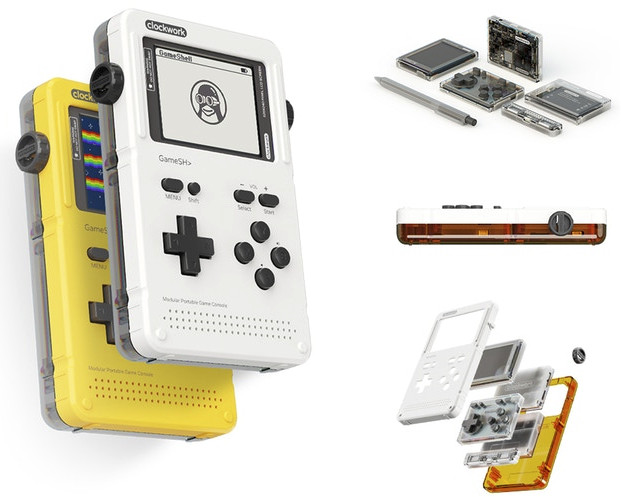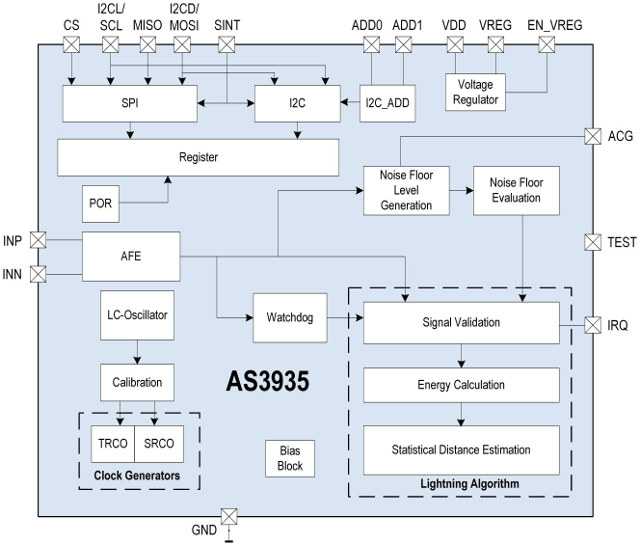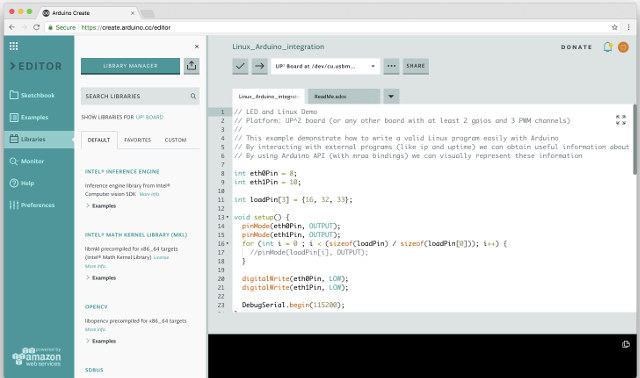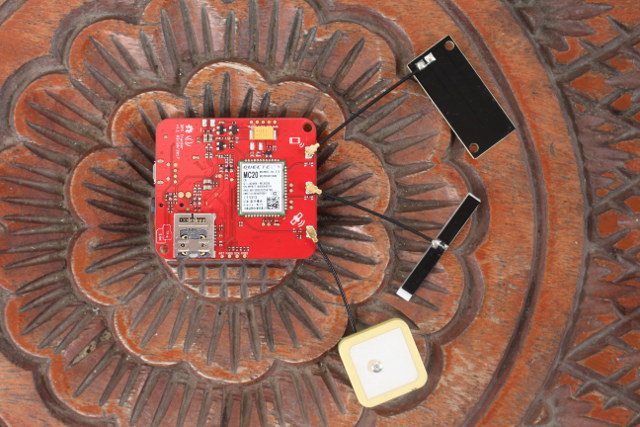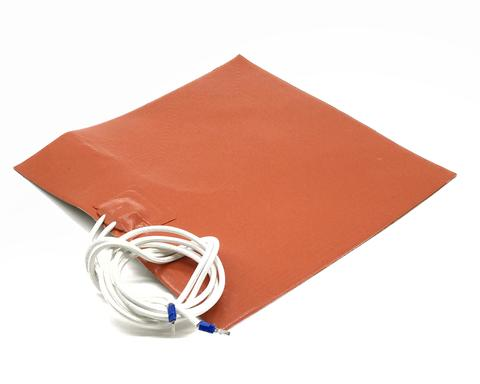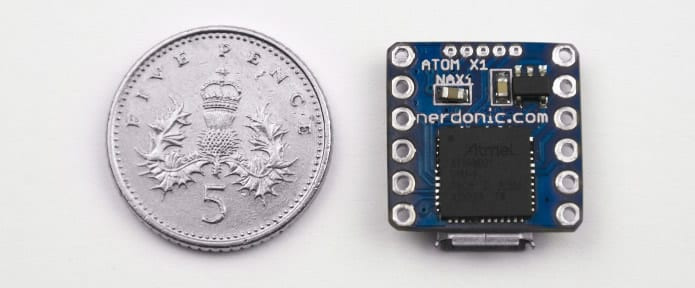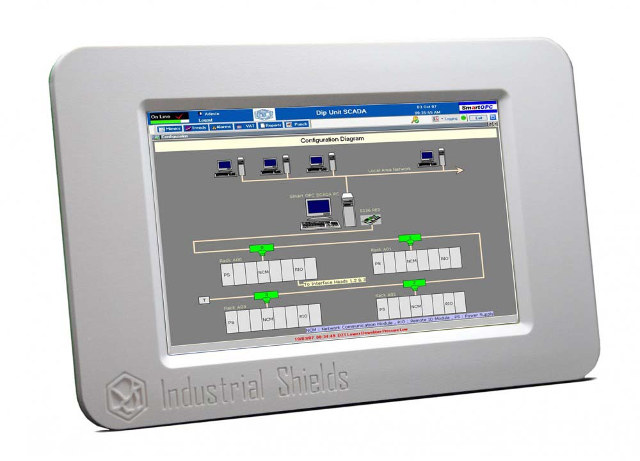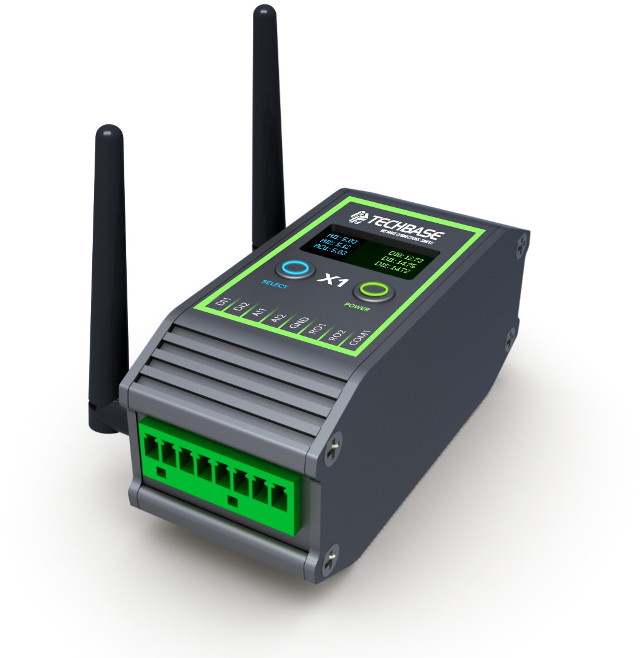Allwinner R16 with its lowly four Cortex A7 cores and Mali-400MP2 GPU would not normally come to mind when designing a gaming console. But Nintendo used the R16 processor twice in their retro gaming consoles: NES Classic and SNES Classic Edition. Clockwork, a startup based in Hangzhou, China, decided they could also do gaming console with the processor: Gameshell. But their product is quite different, as it’s both a portable console with 2.7″ display, and a development platform with the console based on Clockwork Pi development board, and an Atmel AVR (Arduino) based keypad board. Gameshell specifications: Clockwork Pi development board SoC – Alwinner R16-J quad core Cortex A7 processor @ 1.2 GHz with Mali-400MP2 GPU System Memory – 512MB or 1GB (in future revision of the board) Storage – 1x micro SDHC slot Video Output / Display I/F – 18-bit RGB display interface, micro HDMI (planned in revision of […]
Detect Lightning with Those AMS AS3935 “Thunder” Boards
Launched in 2012, AMS AS3935 Franklin lightning sensor is – at its name implies – a lightning sensing IC. The chip was designed for low power, portable or fixed wire-line applications, and beside detecting electrical emissions from lightning activity, it can also provide an estimation of the distance to the head of the storm from 40km away down to 1km, while filtering out other signals from motors, microwave ovens, etc… The chip interfaces via SPI or I2C to the host processor / micro-controller, and comes in a small MLPW-16 (4x4mm) package. Price is $3.55 per unit for 1k orders. Applications include wearables, golf carts, pool safety, portable GPS, bike computers, weather stations, uninterruptible power supplies, smart grid systems, environmental monitoring systems, etc… Basically, AS3935 can be used either for weather monitoring, or safety applications. I’ve found two maker boards with the chip: MikroElectronika Thunder Click board compatible with MikroBUS socket […]
Arduino Create Adds Support for Linux Development Boards (based on Intel processors for now)
Most people are used to program Arduino compatible boards with the Arduino IDE that they’ve installed in their Windows/Linux/Mac OS computer, and manage everything locally. But Arduino introduced Arduino Create last year, which includes Arduino Web Editor allowing you to perform the same tasks in your web browser, and save your files in the cloud. The company has now added Linux support to Arduino Create so that users can now program their Linux devices as if they were regular Arduino boards, and easily deploy IoT applications with integrated cloud services. The initial release has been sponsored by Intel, and currently supports X86/X86_64 boards, but other hardware architectures will be supported in the coming month. In the meantime, AAEON UP2 board is the best platform to get started, as a complete getting started guide is available for the platform. But other mini PCs such as Intel NUC, Dell Wyse, Gigabyte GB-BXT are […]
Giveaway Week – Wio GPS Tracker Board
It’s Friday, and the fifth day of giveaway week on CNX Software. Today, I’ll be giving away Wio Tracker, an Arduino compatible board based on Microchip / Atmel SAMD21 ARM Cortex M0 MCU with GPS, Bluetooth, 2G GSM/GPRS connectivity. My review of the board was rather negative, as I only managed to make Bluetooth 3.0 work while following the documentation as it was back in May. Since then the documentation seems to have improved, and other people have been more successful than me, and made the blink LED, and GPS samples to work. This version of the board only support 2G, so make sure it is still supported in your region/country. To enter the draw simply leave a comment below. Other rules are as follows: Only one entry per contest. I will filter out entries with the same IP and/or email address. Contests are open for 48 hours starting at […]
Tronxy X3S 3D Printer Review – Part 2: Upgraded Heatbed and RAMPS Board
Karl here. So the bed I mentioned in the first part of Tronxy X3S review is not very good. It took about 10-11 minutes to heat up to 60 deg Celsius. I also mentioned I was going to upgrade the board to a RAMPS board. Today we are going to look at both these upgrades. New Heated Bed I can take no credit for this one but I wanted to pass this along. Folger tech sells a 12v 280w heated bed stick on pad. I picked this up for $20, but is now $22. In order to do this upgrade you will need a MOSFET, 12V/30A power supply, and of course the pad above. Super easy installation. Remove the bed and stick on the self adhesive pad centered. Replace the power supply with new one. Should be self explanatory. In order to power this bed a MOSFET is needed. A […]
Nerdonic Exen Mini is the World’s Smallest 32-bit Arduino Compatible Board (Crowdfunding)
Back in June, we reported about μduino board, which at 12×12 mm may well be the world’s smallest Arduino compatible board. It is based on Microchip Atmel ATMEGA32U4 8-bit AVR microcontroller. But there’s now a new board in town which claims to be the world’s smallest 32-bit Arduino board: Exen Mini measuring 14.9×14.9 mm. While I’m patiently waiting for an Intel’s DMCA request, or more likely an email requesting an update once the name has changed, like I had to do for Atomwear Vigekwear, let’s have a look at what the board has to offer. Exen Mini specifications: MCU – Microchip Atmel SAMD21 Cortex M0+ MCU @ 48 MHz with 256KB flash, 32KB SRAM I/Os via 2x 5-pin 2.54mm pitch headers Up to 8x digital I/O Up to 8x PWM Up to 6x analog (ADC) 1x UART 1x I2C 1x reset Limits – 3.7V, 7mA USB – 1x micro USB […]
Industrial Shields Industrial Panel PCs are Based on Raspberry Pi, Banana Pi, or HummingBoard
Boot&Work Corp., S.L. is a company based in Catalonia that sells industrial automation electronic devices under “Industrial Shields” brand. What makes their product noticeable is that they all appear to be based on maker boards such as Arduino or Raspberry Pi. The company offers various Arduino based PLC modules with or without Ethernet that can be controlled with 10.1″ industrial grade panel PCs based on ARM Linux development boards. Currently three sub-families are available: HummTOUCH powered by Solidrun HummingBoard-i2 NXP i.MX 6Dual Lite board BANANATOUCH with either Banana Pi M64 (Allwinner A64 quad core Cortex A53) or Banana Pi M3 (Allwinner A83T octa core Cortex A7) TOUCHBERRY with Raspberry Pi model B or Raspberry Pi 3 model B Beside the different processors, the 10.1″ Panel PCs share some of the same specifications: Display – 10.1″ resistive multitouch LVDS, 315 nits, 170° viewing angle, 1280×720 resolution Video Input – MIPI CSI […]
TECHBASE Moduino X Series Industrial IoT Modules / Endpoints are Based on ESP32 WiSoC
We’ve previously covered TECHBASE ModBerry industrial IoT gateways leveraging Raspberry Pi 3, FriendlyELEC NanoPi M1 Plus, or AAEON’s UP Linux boards. The company has now launched Moduino X series modules powered by Espressif ESP32 WiFi + Bluetooth SoC to be used as end points together with their ModBerry gateways. Two models have been developed so far, namely Moduino X1 and X2, with the following specifications: Wireless Module – ESP32-WROVER with ESP32 dual-core Tensilica LX6 processor @ 240 MHz, 4MB pSRAM (512KB as option), 4MB SPI flash; External Storage – X2 only: micro SD card slot Connectivity 802.11 b/g/n WiFi up to 16 Mbps + Bluetooth 4.2 LE with u.FL antenna connector X2 only: 10/100M Ethernet Options: LoRa (Semtech SX1272); Sigfox (TI CC1125); LTE Cat M1/NB1; Zigbee Serial – 2x RS-232/485 Display – Optional 0.96″ OLED display with 128×64 resolution Expansion I/Os 4x Digital I/O (0 ~ 3V) 2x Analog Input: […]


